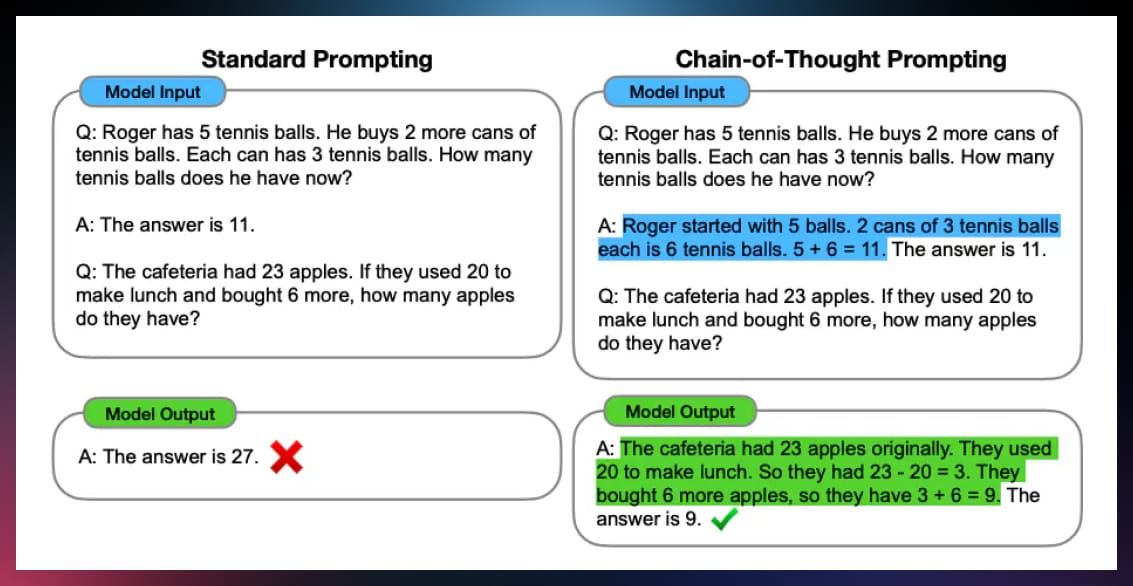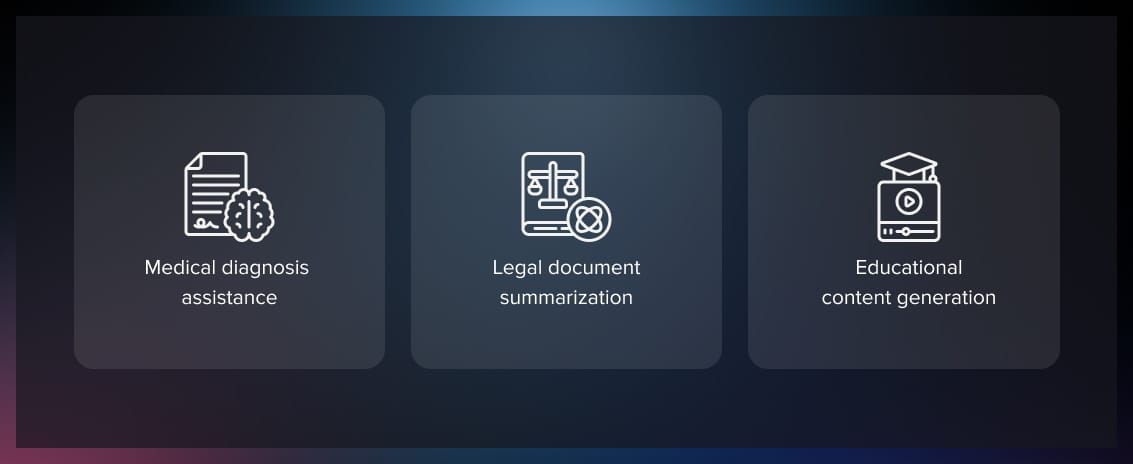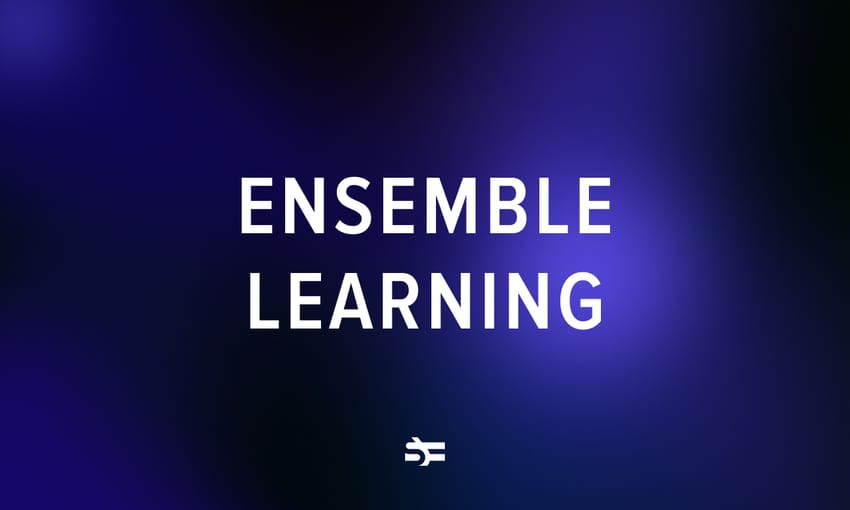Large language models are a variety of artificial intelligence that has been trained to understand and generate human language. These models are used in many fields, including programming, to help humans accomplish daily tasks.
To communicate with the model effectively, you need to understand how to form requests properly. Chain of thought prompting is one of the most efficient techniques when interacting with LLMs.
In this article, you will learn what chain of thought prompting is, how to implement it and what strategies to use to overcome challenges associated with it.
What is prompting?
LLMs are trained on vast datasets to understand and generate human-like text. Emerging abilities of large language models rely on prompts—input cues that initiate and guide the text generation process. A prompt can be a simple sentence, a question, or even a keyword that sets the context and prompts the model to generate relevant content. For programmers and tech professionals, understanding the concept of prompting is essential to leverage LLMs effectively.
There are several approaches to prompting LLMs:
Single-prompt approach
This technique involves providing a straightforward prompt to the LLM, such as “Summarize this article” or “Translate this text.” While simple and easy to implement, single prompts may limit the scope and depth of LLM-generated content.
Prompt expansion
This technique involves expanding a prompt to add context or complexity. For example, instead of asking “Define machine learning,” you might prompt with “Explain the fundamental concepts of machine learning and provide real-world applications.”
Multi-step prompts, or prompt chaining
This advanced technique that appeared in 2022 involves chaining multiple prompts together to guide the LLM through a sequence of steps. For instance, starting with “Explain the concept of neural networks” followed by “Describe the training process of neural networks” enables the LLM to generate detailed, step-by-step explanations.
Limitations of traditional prompt techniques
Traditional prompt techniques have certain limitations:
- Sensitivity to wording. LLMs can be highly sensitive to the structure and wording of prompts, leading to unexpected outputs.
- Lack of long-term context retention. LLMs may struggle to maintain context across multiple prompts, resulting in disjointed responses.
- Dependency on prompt quality. The quality of LLM outputs is directly influenced by the clarity and specificity of prompts.
Chain of thought prompting helps overcome these limitations.
What is chain of thought prompting?
Chain of thought prompting is the approach to LLMs prompting that presents LLMs with a sequence of interconnected prompts that guide the model through a logical flow of information or reasoning. Instead of just requesting the output, such prompts encourage the model to share its “train of thought.”
The primary role of chain of thought prompting is to guide LLMs through a coherent and structured thought process. By presenting prompts in a logical sequence, programmers can control the flow of information and guide the LLM towards producing more comprehensive and accurate outputs. This approach mimics human reasoning, allowing LLMs to understand and respond to complex queries more effectively.
Instead of just providing the model with questions and answers as examples, it also involves reasoning behind the correct results. For example:

Using chain of thought prompting helps to add contextual depth leading to deeper and more detailed responses. Moreover, each prompt builds upon the previous one, facilitating a progressive retrieval of information. This sequential approach enhances the LLM’s ability to generate coherent narratives or explanations.
For instance, when asked to analyze a legal case and provide insights on different legal principles involved, chaining prompts can guide the LLM to explore each principle step-by-step, resulting in a comprehensive analysis that covers all relevant aspects of the case.
Real-life examples of chain of thought prompting

Let’s explore some real-world case studies and examples that highlight the effectiveness of chain of thought prompting:
- Medical diagnosis assistance. In healthcare applications, LLMs can assist in diagnosing complex medical conditions. By chaining prompts related to symptoms, medical history, and diagnostic criteria, LLMs can generate detailed reports on the patient’s condition.
- Legal document summarization. In the legal domain, LLMs can be trained to summarize lengthy legal documents. Chaining prompts can guide the LLM through a structured analysis of the document, extracting key points and providing concise summaries tailored to specific legal requirements.
- Educational content generation. LLMs can assist in creating educational materials. Chaining prompts can facilitate the development of interactive tutorials or learning modules, guiding learners through a curated sequence of information and assessments.
How to implement chain of thought prompting
This is how you can use CTP step-by-step:
Step 1: Define the task or objective. Clearly define the task or objective you want the LLM to accomplish (e.g., summarization, translation, answering specific questions).
For example: “ I need to write a program that sorts a list of integers in ascending order in Python.”
Step 2: Identify key subtasks or components. Break down the task into logical subtasks or components that can be addressed sequentially.
For example: What will the input look like? What should the output look like? Are there any constraints or special cases to consider such as empty lists or lists with duplicate numbers? What algorithms should it use? Should the program first write pseudo code and show it to you and only then translate it into real code?
Step 3: Design prompt sequences. Create a sequence of prompts that guide the LLM through each subtask or component. Ensure that prompts are logically connected and build upon each other to achieve the overall task objective.
Prompt 1: “I need to write a program that sorts a list of integers in ascending order in Python.”
Prompt 2: “How do you expect the sorted output to be returned? Will it be a sorted list?”
Prompt 3: “Have you considered which sorting algorithm to use? Should it be a simple algorithm like Bubble sort, or a more efficient one like Merge sort or Quick sort?”
Prompt 4: “Would you like to start by writing pseudocode to outline the sorting process? This can help clarify the logic before diving into actual code.”
Prompt 5: “Once the pseudocode is ready, we can proceed with translating it into actual Python code. Shall we start implementing the sorting algorithm?”
Step 4: Implement prompt chaining. Implement the prompt sequence in your LLM training or usage pipeline. Ensure that the LLM processes each prompt in the sequence and retains contextual information between prompts.
Guidelines for designing and structuring prompt sequences
When designing prompt sequences for chain of thought prompting, consider the following:
Start simple and progressively add complexity
Begin with straightforward prompts that establish context and gradually introduce more complex prompts to delve deeper into the task. This approach helps the LLM build a comprehensive understanding over multiple prompts.
Maintain context and coherence
Ensure that each prompt in the sequence maintains context and coherence with previous prompts. Use connecting phrases or keywords to bridge between prompts and guide the LLM’s thought process.
Balance specificity and flexibility
Design prompts that are specific enough to guide the LLM towards desired outputs but also allow flexibility to accommodate variations in inputs.
Tools and resources for creating and managing prompt chains
To facilitate the creation and management of prompt chains, you can utilize the following tools and resources:
- Hugging Face Transformers Library. This library provides pre-trained models and tools for fine-tuning and using LLMs, including capabilities for prompt-based interactions.
- OpenAI GPT-3 API. The GPT-3 API allows for prompt-based interactions with advanced LLMs, enabling developers to experiment with different prompt sequences.
- Automatic CoT. Automatic chain of thought prompting in LLMs can help improve the results and save effort on manual prompting.
- Prompt design templates. Libraries of prompt templates can inspire you and help you improve your own prompts. Some examples include LLM Prompts Repository, Prompt Engine, PromptAppGPT, Prompt Engine, Promptify.
Challenges and considerations
Chain of thought prompting offers compelling advantages for optimizing large language models in natural language processing tasks. However, this technique comes with its own challenges and considerations.
- Prompt selection. One of the primary challenges is selecting appropriate prompts that guide the LLM through the desired thought process. Choosing prompts that strike the right balance between specificity and generality can be challenging, especially for complex tasks.
- Complexity management. As prompt chains grow longer or more intricate, maintaining coherence and relevance across prompts becomes more difficult.
- Context retention. LLMs may struggle with retaining long-term context across multiple prompts. Therefore, at each stage, you need to ensure that the model maintains an understanding of the overall task throughout the sequence of prompts.
Common questions about LLMs
In this section, we’ve compiled some general questions about large language models for those who need basic information.
An LLM can be described as…
A large language model can be described as a sophisticated language “expert” that can understand context, grammar, and meaning in human text.
What does a large language model look like?
An LLM doesn’t have a physical appearance because it’s software—a complex set of algorithms and mathematical functions that run on powerful computers. But if you could visualize it, imagine a sophisticated brain made up of interconnected nodes and pathways, designed to process and produce language.
How are large language models trained?
Large language models are trained using vast amounts of text data from books, articles, websites, and other sources of human language. They learn by processing this data over and over again, gradually improving their ability to predict and generate text.
Are large language models neural networks?
Large language models are built using neural networks, which are a type of computational model inspired by the human brain. Neural networks consist of layers of interconnected nodes that process information in a way that mimics our biological neurons.
How does an LLM work?
An LLM works by breaking down language into patterns and sequences. It learns to predict the next word in a sentence or generate coherent text based on the input it receives. This is achieved through layers of computations and adjustments of model parameters during training.
Is ChatGPT an LLM?
ChatGPT is indeed a large language model. It was trained on a diverse range of text and designed to engage in natural language conversations.
What are parameters in LLM?
Parameters in a large language model refer to the variables that the model uses to learn from the data. These parameters are adjusted during training to minimize errors and improve the model’s performance in language-related tasks.
LoRA (Low-Rank Adaptation of Large Language Models) is one of the model training techniques that help to reduce the number of parameters and make the programs that are easier to store and share. LoRA is a new word in LLM training that is faster and more memory-efficient.
Conclusion
Chain of thought prompting in LLMs is a technique of writing prompts to generational models that presents the model with a sequence of prompts. It requires the model to explain how it arrived at a conclusion, which can improve the model’s coherence and understanding of contexts and potentially give better results.
If you want to learn more about machine learning and AI, read other articles on our blog:




.jpg)



